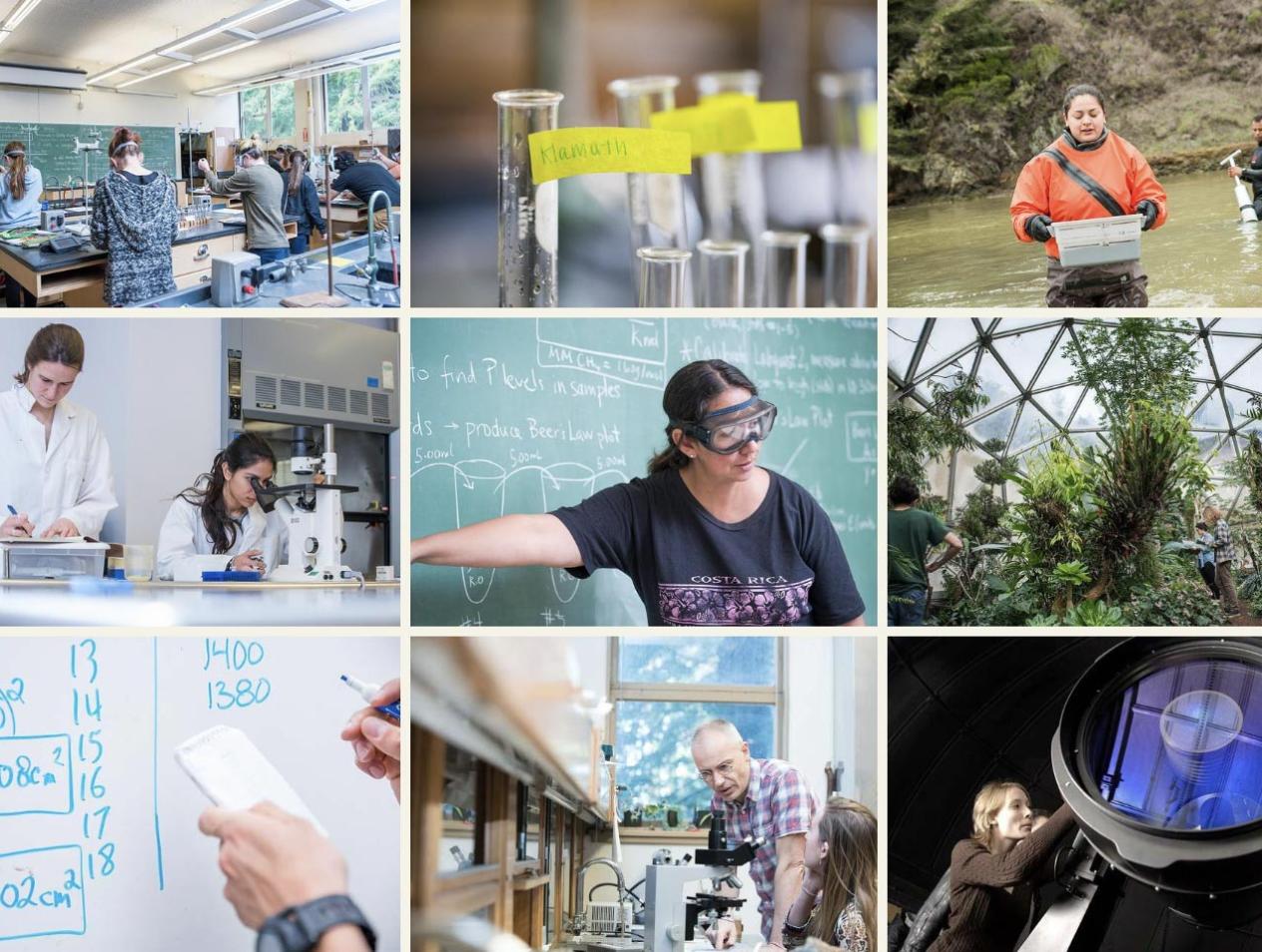Breadcrumb
Achievements
Find out what our students, faculty, and staff are being recognized for.
Andrea Achilli
Environmental Resources Engineering
Dr. Achilli recently published an article that introduced a novel application of pressure retarded osmosis (PRO) in seawater desalination. In the paper, PRO was evaluated in conjunction with reverse osmosis (RO), in a system called RO-PRO desalination, to reduce the energy requirement of seawater RO desalination. The minimum net specific energy consumption of the system was found to be approximately 40% lower than state-of-the-art seawater RO. Full article: "http://dx.doi.org/10.1016/j.apenergy.2014.01.013":http://dx.doi.org/10.1016/j.apenergy.2014.01.013.
Meiling Roddam
Fisheries Biology
Meiling Roddam ('14, M.S. Fisheries) has received a 2014 California Sea Grant State Fellowship. Roddam will work at the interface of scientific research and policy, and determine how to incorporate that science into the Delta Plan. Previously, Roddam worked for California Department of Fish and Wildlife as a Fisheries Technician in the Klamath River Basin and in the Smith River Watershed. Prior to that, Roddam was an AmeriCorps member with the Watershed Stewards Project, a special project of the California Conservation Corps. Roddam earned her undergraduate degree in marine biology at University of California, Santa Cruz, where she studied harmful algal blooms in the Monterey Bay.
Ryan Gustafson
Environmental Resources Engineering
Ryan Gustafson, a recent graduate from the ERE program, received a Viterbi Graduate School PhD fellowship to pursue a PhD in Environmental Engineering with Prof. Amy Childress at the University of Southern California. He will be funded for four years to continue his research on membrane distillation that he started last year at HSU with Dr. Andrea Achilli.
Nathalia Holt
Biological Sciences
Nathalia Holt ('02, Biological Sciences) has written a book that tells the personal stories of two men whose HIV infections were cured in distinct yet essentially related ways, revealing the imminent promise of a cure for HIV. "Cured: How the Berlin Patients Defeated HIV and Forever Changed Medical Science," is forthcoming from Penguin in February. Holt is an award-winning research scientist specializing in HIV biology. Her research has led to major developments in the HIV gene therapy field. After receiving a Bachelor's degree from HSU, she trained at the Ragon Institute of Massachusetts General Hospital, MIT and Harvard University, the University of Southern California and Tulane University. She lives with her husband and their daughter in Boston, Massachusetts.
Jeffrey Kane
Forestry, Fire & Rangeland Management
Assistant forestry professor Jeffrey Kane recently published an article in the journal Oecologia asserting that the number of resin ducts a tree has can help predict how resistant the pine is to beetle infestation. The results of the paper, combined with the findings of an earlier study, provide information that may be useful to land managers who are trying to keep public parks and other relatively small forested areas healthy. In the first study, researchers demonstrated that a certain type of slippery bark protects trees from pine beetle attacks, which can kill trees. For the full article, visit http://link.springer.com/article/10.1007/s00442-013-2841-2/fulltext.html.
Mark Colwell, Luke Eberhart-Phillips, Wendy Pearson
Wildlife
Mark Colwell and his former graduate students, Luke Eberhart-Phillips and Wendy Pearson, recently published three papers addressing various aspects of the population and reproductive biology of the Snowy Plover. This federally listed species has a small population in Humboldt County, which Colwell and his students have studied for 13 years.
Kathleen H Sienko, Amir Sabet Sarvestani, Lonny Grafman
Environmental Resources Engineering
Amir Sabet Sarvestani and Kathleen H. Sienko of University of Michigan, with Lonny Grafman of Humboldt State University, presented an "Open-Source, Wiki-Based Medical Device Compendium for Global Health" at the Second WHO Global Forum on Medical Devices in Geneva, Switzerland.
Jeffrey Black, Micaela Szykman Gunther and student Kristin Brzeski
Wildlife
Wildlife Professors Jeffrey Black and Micaela Szykman Gunther recently co-authored a paper with student Kristin Brzeski in _The Journal of Wildlife Management_ evaluating the status of river otters in Humboldt Bay. River otters have experienced dramatic population declines in the last century and relatively few studies have evaluated their status, especially in California. Black, Gunther and Brzeski evaluated the population of river otters in Humboldt Bay by extracting DNA from the animals' scat. They analyzed the scat in the lab to create unique river otter "fingerprints." They pooled that data with visual observations from a citizen science project and determined that the Humboldt Bay is home to a larger number of river otters than previously expected. It also has a higher density of the creatures compared to other coastal systems. To read the full paper, visit http://onlinelibrary.wiley.com/doi/10.1002/jwmg.610/abstract.
Georgia Kaufman
Biological Sciences
Georgia Kaufman, a Cellular & Molecular Biology major (adviser Professor Jacob Varkey) has been awarded the 2013 Jack and Maureen Yarnall Scholarship for a Student Athlete majoring in the Biological Sciences. Georgia is a junior and a member of the HSU Crew Team.
Jairo Luque Villanueva
Environmental Resources Engineering
Jairo Luque Villanueva ('15, Environmental Resources Engineering) was one of 33 students nationwide to receive a prestigious GRO Fellowship from the Environmental Protection Agency. GRO recipients are eligible to receive up to $50,000 over two years for their studies in the sciences and math. They also receive an EPA internship. Villanueva is interning with ERE professor Andrea Achilli. He is researching forward osmosis and membrane distillation wastewater treatment/water reuse. Villanueva previously served as a student assistant and tutor for HSU's Indian Natural Resource, Science and Engineering Program and as a summer research intern at the University of Minnesota.






